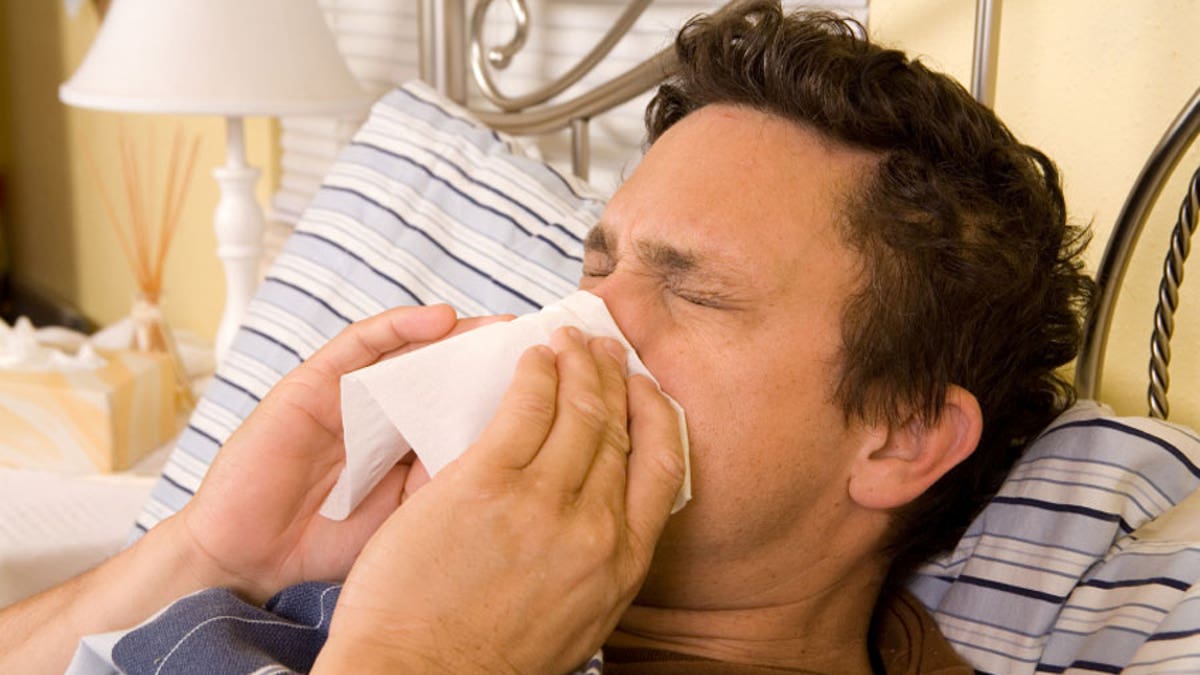
(iStock)
The common practice of temporarily replacing sick workers with healthy ones— previously believed to slow the onset of disease— may actually increase the spread of illness, suggests new research aimed at modeling and improving disease outbreak plans.
When a teacher or nurse catches a cold, they are typically sent home and a separate employee takes over. This practice, researchers assert in a study published Wednesday in Nature Physics, may put replacements— particularly those working in environments conducive to the spread of disease, such as schools or hospitals— at risk for contracting the illness.
By staying at home after getting sick, employees are removing themselves from the environment that caused them to become ill but a healthy individual has been put in their place. This new individual, who had not made contact with the disease prior, is now in an environment where they are much more likely to catch and subsequently spread the illness, researchers said.
Particularly, if the replacement becomes sick, they are then likely to transmit the disease to individuals who would not have been infected by the original worker, thus increasing the overall number of people sickened daily, study authors argued.
Inspired by the Ebola outbreak that wracked regions of West Africa, researchers analyzed data from past disease outbreaks, studying 17 flu epidemics that occurred in the United States as well as the data from 17 years of dengue fever occurrences in Puerto Rico.
The study used a combination of mathematics and computer simulations to model a system the researchers refer to as relational exchange. This exchange, they said, would replace the sick individuals with healthy ones, and the healthy individuals would thus inherit the acquaintances and contacts of the sick individual.
When relational exchange was modeled, researchers calculated an exponential increase in the number of individuals infected each day during the period directly before the epidemic rate peaked.
The results of the simulation came in sharp contrast to standard disease spread models, called mass-action models, which are used by health organizations such as the Centers for Disease Control and Prevention (CDC) to combat epidemic outbreaks, and generally call for substitute workers to be used, researchers said.
"One take-home of our study is that it may be very difficult to predict the size of a disease outbreak," lead researcher Sam Scarpino, an assistant professor of mathematics and statistics at the University of Vermont, said in a news release. "And mass-action models can't really account for the kind of sudden speedup and slowdown in transmission that many real-world epidemics show.”
Current mass-action models assume that infected individuals will interact randomly with other people and that estimates provide forecasters with a worst-case scenario that helps them map the spread of disease.
However, researchers argued that their relational exchange-based model is more accurate, and said it provides a more realistic look at the workplace by qualifying the interactions individuals have rather than having them as random.
These new findings do not mean that employees should remain at work when sick, Scarpino said. Instead, researchers want their results to be used to improve disease outbreak action plans and develop better disease protection systems.
"If you're making strategic decisions about how many health care workers you need, how many people you might expect to show up in the hospital, or how many courses of antivirals or antibiotics you might need, then the pace and tempo of cases matters deeply," Scarpino said. "With a huge number of new cases coming in, that could easily overwhelm the health care system and hospitals."
Researchers acknowledged removing sick individuals from a workplace is often one of the only options employers have during a disease outbreak, but they further stressed the importance of providing vaccinations for employees.
"Our study suggests that replacing sick workers quickly throughout an epidemic is important," Scarpino said in the release, "and vaccines, if they're available, should be provided to substitute teachers and nurses and other critical replacement workers as far in advance as possible."
